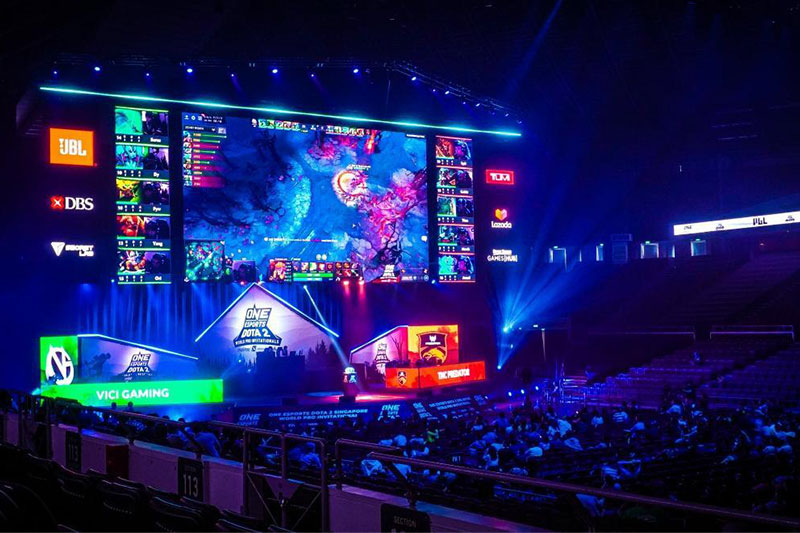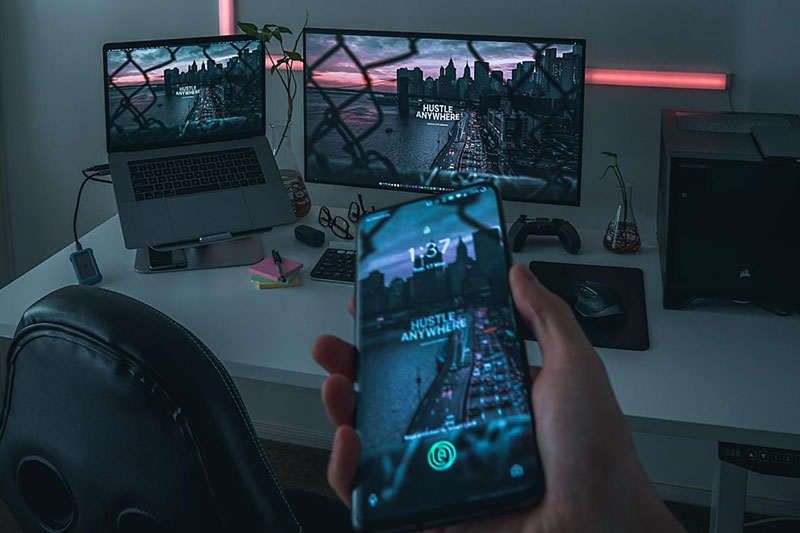From branding to engagement, gamification to leveraging visual content, there are plenty of marketing lessons to be learnt from the video game industry.
Love it, hate it, there is no denying that the video game industry is a giant in the modern business world. The global gaming market is currently worth more than 120 billion US dollars, which means that there is ample room for growth and investment, but also numerous lessons to be learned.
The biggest and most popular game development studios in the field along with their publishers are not only pushing multi-million dollar, triple-A games to the market every year, but they are doing so by investing heavily in marketing, promotion, and social media management to achieve their financial goals.
After all, creating a quality video game is but a piece of the puzzle, as you need to create a certain level of hype months and even years before release in order to engage the community, inspire customers to pre-purchase the product and ensure success from day one. This is something that the agile project management of CD Projekt Red achieved way back in 2012 for its upcoming blockbuster game Cyberpunk 2077, due to release this year, in their endeavour to build anticipation and ensure financial gain before its release.
As you can tell, there is plenty we can learn from video game developers and publishers, so let’s take a look at the five marketing lessons you can leverage to grow your own business.

Start by creating a powerful narrative
No matter how fun the shooting mechanics might be or how smooth the driving mechanics are, it’s a fact that video games come to life through immersion and storytelling.
Without storytelling, there is nothing to convince the player (or customer, if you will) that this game (in your case, your product) is any better than the ten other games that are due to release the same month or within the same week. New video games hit the market every single day, and if the publishers want to make a profit, they have to create a powerful narrative.
The same goes for you. The narrative you create around your upcoming line of products, or a single flagship product, can mean the difference between making millions from pre-sales, and losing money on the first day after release. When you create an immersive story, you have to tease your audience months if not years in advance in order to build the anticipation and support the popularisation of a culture. After all, you don’t think that zombie games became so popular all on their own? No, video game publishers have worked hard for years to make that happen by popularising the genre.
Emphasise your brand’s identity
There is no need to stress the importance of having a powerful brand identity and a winning brand style guide in the modern business world, but the gaming industry truly highlights the need to leverage branding in such a way that it completely separates your business from the rest in your industry. In the oversaturated gaming sector, brands cannot afford to lose their uniqueness, which is why you will see that Activision is vastly different from Avalanche Studios, or that Bethesda has a unique style that no other company can mirror. With that in mind, make sure to prioritise brand-building in your own marketing strategies to set yourself apart from the competitors.

Focus on visual content and catchy videos
Of course, you can’t expect your brand’s identity and personality to do all the work – you also have to have a powerful visual strategy to capture the attention of your online and offline audience, engage them in various ways, and inspire them to buy your products and become your loyal followers. This might sound like you’re asking a lot from a simple visual strategy, but in reality, visuals can skyrocket your brand’s visibility, relevance, and reputation.
One of the most powerful visual marketing tools are the gaming highlights videos, popularised by video game giants like CS:GO and Fortnite through the use of an innovative custom intro maker that companies leverage to give their highlight reels a unique visual appeal through themes, logos, special effects and animations, and more. By focusing on your own visual strategy and creating product highlights and promos, you can appeal to the online audience and capture their attention quickly.
Build a thriving and engaged community
Without a doubt, the gaming industry thrives on its devoted, passionate, and knowledgeable community. Gaming has become a quintessential element of the modern global culture, and its community gives it the drive it needs to motivate younger generations and help people from different walks of life become part of that culture.
As you can imagine, focusing on building a positive and devoted community for your industry and niche will help elevate your brand experience and gain new followers and customers, and create a more sustainable model for the future. Because after all, the future of your company lies in the hands of the people.

Leverage the popularity of gamification
Lastly, the gaming industry uses many gamification elements to engage their online audiences and inspire them to become loyal fans of a particular game published, or even devoted fans of a specific game. Gamification is a great way to turn the attention of the online world to your brand and your products, simply because people love participating in online quizzes and contests in hopes of winning some free merchandise, samples, or even vouchers they can use in your store. Be sure to leverage gamification to build the hype around your products and brand, and watch as you start to gain new followers, quality leads, and customers.
Wrapping up
There’s a lot we can learn from the giants and the smaller brands in the gaming industry, especially how they use their creativity in marketing to boost their visibility, popularity, and trust in the online world. With these tactics in your arsenal, you will have no problem growing your business safely and efficiently for years to come.
Related Articles
Content Localisation: 8 Success Tips to Help You Expand Globally
TestPlay: This App Uses Gamification to Help You Learn Languages
Brand Identity: 5 Tips to Creating a Winning Brand Style Guide





